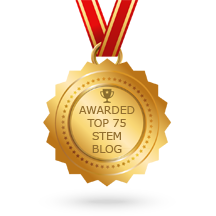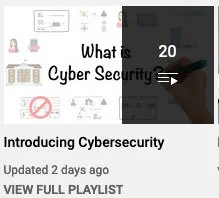Start Engineering Now, our blog on STEM learning and careers
Subscribe to keep up with how STEM shapes, and is shaped by, some of the biggest issues of our day, from teaching and learning to diversity to policy and innovation.
“The only resource of its kind … I highly recommend it for 8th-12th graders. And parents, too!”
–Middle-school teacher, Washington, DC
Artificial intelligence is changing the world of work faster than ever — and students are asking big questions. Will there still be jobs for humans? What should I study? How do I prepare? That’s why we created Future-Proof Careers in the Age of AI — a 168-page guide that highlights 75+ AI-resistant careers across healthcare, skilled trades, teaching, technology, public service, creative work, and more. It shows students where humans are still essential — and how to build a future they can count on. Learn more and read the rave reviews.
From elementary classrooms to college labs, AI is changing how students learn STEM. It offers personalization, collaboration, and efficiency, but it also risks skill loss, academic dishonesty, and teacher frustration. Context and guidance are key. When paired with training, structured use, and attention to ethical issues, AI can evolve from a destabilizing force into a scaffold for critical thinking and real-world readiness. It’s an urgent issue, because AI is developing so fast that the changes it can bring could well escape our ability to manage them.
Are we flooding the market with STEM grads, or are we falling dangerously short? The great STEM workforce debate bounces back and forth between these two, probably reductive positions. In fact, both sides have a point, but they obscure the deeper challenges. We need to be rethinking how we connect STEM education to jobs that matter to individual grads and the country as a whole. Then figure out how to make sure students, educators, employers, and policymakers are using the right set of tools to solve the same problem.
June marked 25 years since the Human Genome Project and Celera dueled each other in a landmark race to decode human DNA—an achievement that ignited a $1.5 trillion biotech revolution. Today, genomics drives advances in medicine, agriculture, and sustainability, with growing education and career opportunities fueled by public and private investment across the U.S. and beyond. Keep reading to learn more about biotechnology innovations and how students can help shape the future by making a career for themselves in the field.
Data science blends math, coding, and critical thinking to solve real-world problems and offers rich opportunities for career readiness. This post explores its role in education, key skills, classroom integration, and career pathways—showing how students from all backgrounds can engage with data to make informed, ethical decisions and shape the future.
"When am I ever going to use this?" is a question that students have been asking forever about what they're learning in school. One way to answer this question is through career-connected learning, or CCL. A way to bring practical learning and real-world work experience into K-12 education, CCL is taking root in communities across the country.
Over two-thirds of Americans have little or no understanding of how AI tools work to shape what we read, think, buy, stream, and generally encounter in our online lives. For students entering a workforce increasingly shaped by AI tools that are getting developed at lightning speed, such a lack of understanding can hinder career success. Our AI career guide and student workbook publications can help.
AI is already embedded in students' lives and will be only more so in their careers. Their future successes will require AI literacy. While only 2% of jobs require technical AI skills, understanding and using AI tools are crucial for all. Read more to find out what AI literacy is really all about and how to help students build it into their educational and career plans.
Engineering is the field where the future comes into focus and then becomes the present. Show students how with our updated career guide. It features exciting innovations and advances in engineering that are becoming reality — houses printed in 3-D, windows that generate energy from the sun, and prosthetics that learn the more people use them, and much more!
AI has ramped up the speed and scope of cyber attacks at the same time as it has made cyber defenses more agile and effective. One thing that hasn't changed – the need for people with interest and skills to put their talent and energy towards making the internet safer for all of us. Read more to find out how to help get students interested and prepared for careers in this important, rewarding field.
For decades, toys have been made of plastics that have made them hazards to the environment. And as the industry has grown, the environmental impact has only gotten worse. But things are changing for the better, and the toys on this list all represent eco-friendly approaches to both manufacturing and playtime itself.
The job of saving the internet gets more difficult every year. Online crime is bad enough, but even the legal ways our personal data gets scooped up for rampant commercial use puts us at risk. What to do now – preach “data care,” start young, and help individuals take charge of what happens to personal information online.
Mark Rober’s genius videos about crazy building projects can excite kids about engineering. But then what? Here’s how to channel that enthusiasm into learning easily done in class or at home.
Lawmakers’ efforts to expand America’s research and development enterprise dominated discussions about STEM education policy in 2021. While questions remain, it seems likely that 2022 will see really big increases to funding levels at the National Science Foundation and some of the other federal agencies involved in science and technology discovery and education.
“Introducing Cybersecurity” is a playlist of videos that can help get students excited and interested about career prospects in the field. Whether feeling hesitant, hurried, harried, or even helpless, educators and counselors of all kinds will find something at their level to make cybersecurity a relatable, viable study and career pathway for their students.
During this Cybersecurity Awareness Month, we’re excited to announce our latest publication, Outsmart Cyberthreats. It’s equal parts online safety guidance and career awareness for middle schoolers. Kids will learn how to take informed control of what happens with their data when they use the internet and to make informed decisions about possible career paths in the field of cybersecurity.
Our top 10 blog posts from the last 18 months reveal a rich variety of reading interests and behaviors among our much-appreciated subscribers. From toys to engineering outreach programs to cybersecurity to TED talks, STEM education writ large offers up topics and approaches to catch many different kinds of eyes.
To learn what really happens to our data online, documentaries will give you a fuller picture than the movies. So far, so obvious. But be warned – you’ll need a strong stomach to go back online after watching some of these titles.
COVID accelerated the growth of online gaming, as lockdown kept people at home and limited to socially-distanced diversions. But harassment and hate, fueled by sexism and small-mindedness, lurk in the dark corners of the enterprise. Girls and women can pay an extra, cruel price for just wanting to play, and it’s clearly something we should be committing to make right.
Perseverance touched down for a picture-perfect landing on Mars, after a seven-month journey. On a search for signs of ancient Martian life, the rover is the most advanced robotic device ever launched into space. At every turn, the mission features amazing, inspirational examples of science and engineering at their best. Here are seven parts of the picture from the landing that especially caught our attention.
COVID has driven learning out of the school and into the home. STEM learning, especially, presents clear challenges to families trying to make at-home school work. Find out how STEM and social-emotional learning can combine to open up possibilities for parents and children to learn and grow together in uniquely nourishing ways.
Our last holiday toy list showcases a diverse group of other list-makers who have gathered engineering-related toy and gift ideas in distinctive ways. You are sure to find something for kids of all kinds, ranging from the budding engineer to even just the mildly curious. And the last item on the list might just change a kid’s life(!).
Career awareness in K-12 is not working very well for the tech-driven, rapidly-changing workforce that awaits students upon graduation. To fix this problem, we think career awareness should be done “backwards.” That’s how our career awareness program works. What does all this really mean? Keep reading to find out.
The shadow of COVID-19 makes this a school year unlike any other, and it could mark the start of long-lasting challenges for K-12 education. But lots of smart people have been hard at work on ways to make pandemic-era online learning work better for larger numbers of teachers and students. If nothing else, though, making it up as we go along is the new normal.
Twenty years ago, few people thought much about K-12 engineering education. Now it’s a foundation of science education at all levels. Cybersecurity education seems to be following a similar path. Read more to see why.
Career awareness for elementary school might sound awful. But if we ask kids the right questions, we can help them take their first steps towards work that’s meaningful to them and beneficial for the world.
Cybersecurity education means more than just certifications and technical knowledge. It’s about problem-solving, advanced communications skills, and a grasp of the larger context — geopolitical, legal, economic, ethical, or historical. CyberCAP, our new career awareness program, can show students all about it.
At-home engineering lessons can start with children’s books. Even the Cat in the Hat has something to teach on the topic. For parents suddenly turned into their kids’ teachers, using story to teach engineering can mean learning for all.
Engineering is riding a long wave of growing popularity in K-12 education, much to the satisfaction of students, colleges, and employers. But finding and training teachers could be the rock on which the wave crashes. Are we entering the make-or-break phase for the “E” in STEM? Read more to find out.














![How to Follow Up on Phat Gus and [His] Squirrel Friends](https://images.squarespace-cdn.com/content/v1/521a22dee4b0d4fe197a5550/1643393134310-0FWQI62ZFEDAVIP40DPN/P132+-+squirrel+maze.png)
















The Pullback: Federal Cyber Education Faces Cuts
Federal support for cybersecurity education and training is shrinking — from budget cuts to dissolved programs — raising concerns about America’s future cyber workforce. Yet youth organizations are stepping up with innovative programs in AI and cybersecurity, keeping students inspired and career-ready despite the funding retreat.